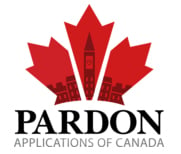
What’s the Difference Between a Conditional and Absolute Discharge in Canada?
by Joel LaForest, Research Analyst with Pardon Applications of Canada
As residents & citizens of Canada, we strive to ensure our judicial system is as fair and equitable as possible. This is why our courts treat more heinous crimes like assault and manslaughter much more seriously than they do minor offences like possession or driving without insurance.
When arrested and accused of a crime in Canada, convicted criminals are assigned a criminal record. This record remains permanent for as long as the individual is alive unless granted a Record Suspension. However, an individual’s criminal record won’t show any information related to the arrest or conviction when given a discharge. But, did you know that a presiding judge may give two types of discharges?
Below, we explore the difference between a conditional and an absolute discharge in Canada.
What Is A Conditional Discharge?
A conditional discharge in Canada is defined as part of the sentence granted by a judge in a criminal court, where the conviction will not show on the individual’s record so long as they comply with certain predetermined conditions. To receive a conditional discharge, the offender must plead guilty to an offence, even though they may not necessarily be found guilty.
A conditional discharge stays on an individual’s criminal record for three years, as per the Canadian Criminal Record Act. During this time, they are likely to be sentenced to probation. Should they fail to uphold the conditions of their probation order, the courts may revoke the conditional discharge, and the individual will result in a criminal conviction.
Travel restrictions may be one of the conditions set by the court. Even after successful completion of the conditions, the discharge remains on the criminal record for three years, potentially affecting international travel.
Conditions Of A Conditional Discharge
A conditional discharge may be sentenced to first-time offenders who commit a crime viewed as less severe in the court’s eyes, such as a Summary Offence.
In other words, an individual won’t receive a conditional discharge if convicted or previously convicted of a more serious crime, such as manslaughter or theft over $5,000. To receive a conditional discharge, the offender must also submit certain information to the judge, proving that they deserve the discharge.
In general, whether or not an offender receives a conditional discharge depends on factors, such as the severity of the crime, and whether the prosecutor and criminal defence lawyer agree on this favourable outcome.
Restrictions for a Conditional Discharge
A conditional discharge comes with several restrictions that the offender must adhere to. For instance, the offender is typically required to follow the conditions of probation, which might include community service, attending counselling, or avoiding certain places or people. Failing to meet these conditions can lead to a revocation of the conditional discharge and an official criminal conviction being placed on the offender’s record.
What is an Absolute Discharge?
An absolute discharge is usually warranted when an offender has pleaded guilty, but no findings of guilt are made. Unlike a conditional discharge, the individual will not have any conditions to uphold, and there will be no record of arrest or conviction on their permanent record. An absolute discharge only remains on record for one year.
How Absolute Discharges Work
It’s sometimes difficult to secure an absolute discharge in Canada because the defendant must plead guilty to an offence in the first place to receive the discharge.
Offenders stand a good chance of receiving an absolute discharge if:
- There’s no prior criminal record
- They’ve never received a charge for an offence
- They’ve previously received a discharge
Restrictions for an Absolute Discharge
While an absolute discharge is more lenient and does not come with specific conditions like a conditional discharge, there are still restrictions associated with it. One of the main restrictions is eligibility. It can be difficult to receive an absolute discharge, especially if the offender has a previous criminal record or has received a charge for an offence before. The court considers various factors, including the nature of the crime and the character of the offender, before granting an absolute discharge. You can generally travel freely, as there are no conditions to adhere to, and the discharge is wiped from the record after a year. However, it’s always advisable to check the specific entry requirements of the destination country.
Conditional vs. Absolute Discharges in Canada
When it comes to conditional and absolute discharges, there are several differences.
Primarily that, with a conditional discharge, the offender must meet several conditions laid out by the court, including:
- Community service
- Regular meetings with a probation officer
- Fines and restitution
- Targeted treatment (for charges related to addiction or anger management).
On the other hand, when an absolute discharge is given, the offender doesn’t need to meet any court-defined conditions. There will also be no permanent information regarding the arrest on their record.
Lastly, it’s important to note that a conditional discharge can become absolute after the offender successfully meets the conditions of the probation period.
This means that if an offender completes all the required conditions, such as community service, probation meetings, and targeted treatment, they may have their conditional discharge changed to an absolute discharge. This is beneficial for the offender as it removes any lingering consequences or obligations associated with the initial charge.
The absolute discharge does not require the offender to fulfill any conditions or obligations. It is essentially a complete dismissal of the charges, with no lasting impact on the offender’s record. This can be advantageous for the offender, as it allows them to move on from the incident without any further involvement with the criminal justice system.
However, it’s essential to understand that the availability of conditional and absolute discharges varies across jurisdictions and depends on the severity of the offense. Some offenses may not be eligible for either type of discharge, while others may only be eligible for one or the other. It is important to consult legal resources or seek professional advice to understand the specific laws and regulations applicable to a particular jurisdiction.
Additional articles: Absolute or Conditional Discharges: What You Need to Know
PAC’s Ongoing Service Commitment
Email [email protected]
Schedule a Call https://www.pardonapplications.ca/schedule-a-call/
My Account Dashboard https://dashboard.pardonapplications.ca/
About the Author
Joel LaForest is a Research Analyst with Pardon Applications of Canada and the owner of The Hobo Marketing Co., specializing in writing about law, finance, health, and wealth.
To see if you qualify for a Canadian Pardon, fill out the form below or contact Pardon Applications of Canada via 866-383-9744.


